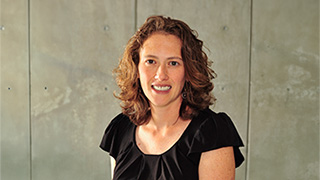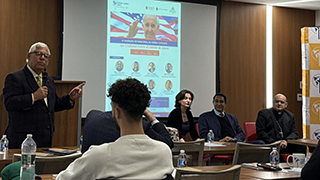Statistics and Behavioral Science Faculty Engage in New Co-Authored Textbook
Wednesday, March 26, 2025

Susan Nolan
The subject and practice of statistics may seem challenging or intimidating to students, but professors Susan Nolan and Kelly Goedert seek to change that perception and make statistics through the behavioral psychology lens more accessible. The result is Nolan and Goedert’s collaborative work on an updated version of the book Statistics for the Behavioral Sciences, (New York: Worth Publishers, Macmillan Learning, 2024), which connects various expert perspectives on statistics and behavioral science with real data from statistical history and modern research.
Nolan began working on the original version of the book in 2005 and wrote earlier editions (it is now in its sixth edition) with former co-author Thomas Heinzen. She is a specialist in international psychology education and associated studies at Seton Hall, while her writing partner, colleague and friend, Goedert, is professor and chair of the Department of Psychology. Goedert has extensive knowledge in cognitive psychology and related subject matter and says she and Nolan made excellent writing and research partners because of their differences in training, not in spite of it.
“Susan and I are in completely different subfields within psychology, which means that we had very different graduate school training,” said Goedert. “Susan was trained as a clinical psychologist with some of her research bordering the field of social psychology. On the other hand, I am a cognitive psychologist by training and my research has focused on spatial attention, among other topics. We are a great writing team because we both come to the writing with very different content expertise, but we both have a strong attention to detail, and an openness to receiving constructive feedback.”

Kelly Goedert
Quick to praise each other, the authors highlight each other’s strengths. “One of the great things about working with Kelly is that she's really cutting edge on all statistical research,” says Nolan. “She’s the kind of person who will go to a week-long workshop on a computing software statistics language in the Netherlands - for fun!”
Both are deeply invested in the quality of their work, and Nolan functions as an editor of her own writing and Goedert’s, using skills she developed over the many iterations of the textbook. Nolan explained that years ago, she learned to translate academic journal writing into more accessible reader style when she began to author textbooks. “I had to,” she said. “Fortunately, I had a development editor who’s a novelist. That’s been great because it’s essentially like [having] my writing coach.”
One way the authors engage readers, many of whom are new to statistics and intimidated by the discipline, is with storytelling. “Every chapter opens with a story,” she says. “Some of them are historic [and they are] all true. We’re trying to pull the students in with that.” Explaining that the field of statistics is changing, Nolan and Goedert pay special attention to making the material more accessible. “As social and behavioral science become more open and transparent, the methods and ways of presenting are shifting,” Nolan added.
Goedert is skilled at ideating statistical examples students may find interesting and relatable, such as correlating the practice of regression to algorithms and policing and the fact that they can lead to racial bias. “I try very hard to ground my examples in real research,” she said, “but real research based on questions that are timely or likely to be of interest to the students.” Creatively, Goedert says examples she uses to engage students include research using the side-by-side feature on TikTok to teach Thai students traditional dancing, and research on the effects of a study abroad experience on college student self-efficacy. She also simplifies the idea of statistical analysis by charging students to work with statistical thinking that determines the likelihood of events, “such as our favorite childhood pizza place being closed down.”
Using visual displays of data, mathematical and formula pedagogy, many practice exercises and immersive learning activities that help students determine how to interpret statistical results and which tests to use, the latest edition updates industry standards on open science practices and offers new “Statistics at Work” photo examples – according to the publisher’s description. To hear a conversation with the authors, listen to the Hazard Zet podcast interview from December 2024.
Categories: Business






